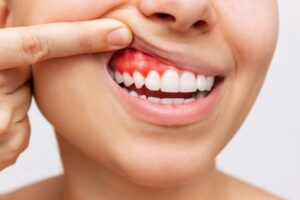
As we age, our bodies go through many changes, and our oral health is no exception. One of the most common dental issues faced by older adults is gum disease, also known as periodontal disease. In fact, studies by the American Academy of Periodontology show that 64 percent of adults over the age of 65 have some form of gum disease. While it may seem like an inevitable part of getting older, there are specific causes and risk factors that contribute to the condition, and many of them can be managed with proper care.
What is Gum Disease?
Gum disease is a broad term that encompasses conditions like gingivitis and periodontitis, which involve infection and inflammation of the tissues surrounding the teeth, including the gums and bone. Gingivitis, the mildest form, causes red, swollen, and easily bleeding gums, and can be reversed with good oral hygiene and professional treatment. Periodontitis, a more severe form, involves bone loss around teeth and can be managed but not cured with professional treatment. It can be reversed with gum grafts, bone grafts, tooth replacement, and other treatments.
Why Are Older Adults More at Risk?
Several factors make gum disease more common in seniors:
- Long term plaque buildup: Gum disease typically results from the buildup of plaque, a sticky film of bacteria that forms on the teeth and gums. Over time, especially in people who may have missed dental care at earlier stages in life, plaque can harden into tartar, which is much harder to remove without professional cleanings. Older adults are more likely to have had prolonged plaque exposure, increasing their risk for gum disease.
- Dry mouth: Saliva helps neutralize acids and wash away food particles and bacteria. Many older adults experience dry mouth due to age-related changes or as a side effect of medications for conditions such as high blood pressure, heart disease, or depression. A lack of saliva can make it easier for bacteria to thrive, increasing the risk of gum infection.
- Medical conditions and medications: Certain chronic illnesses, such as diabetes, heart disease, and arthritis, are more common with age and can increase the risk of gum disease. Diabetes in particular can impair the body’s ability to fight infection, including infections in the gums. Additionally, medications that affect blood flow to the gums or suppress the immune system can further elevate risk.
- Tobacco use: Many older adults have a history of smoking or using tobacco products, which is a major risk factor for gum disease. Smoking affects the gum tissue’s ability to heal and can mask symptoms like bleeding gums, making it harder to detect early signs of disease.
- Neglecting dental visits: As people age, they may face barriers to accessing dental care: mobility issues, lack of insurance, or simply assuming tooth loss is inevitable. Unfortunately, skipping dental visits can mean gum disease goes unnoticed and untreated until it becomes severe.
The good news? Gum disease is preventable and treatable, even in older adults. With regular dental checkups, good oral hygiene habits, and proper management of health conditions, you can maintain healthy gums and a full smile well into your golden years.
About the Author
Dr. Bikram Singh is a 2002 graduate of the University of Pennsylvania School of Dental Medicine. During this time, he was one of five students who were selected for the Honors Program for Medically Complex Patients. Dr. Singh is also a member of the American Dental Association, Academy of General Dentistry, and the North Carolina Dental Society. If gum disease is affecting you or a loved one, visit Cary Dental Rejuvenation where we use the latest technology, like soft tissue lasers for more comfortable treatment and thorough deep cleaning above and below the gumline. Visit us online to make your appointment or call our office at (919) 460-5454.
